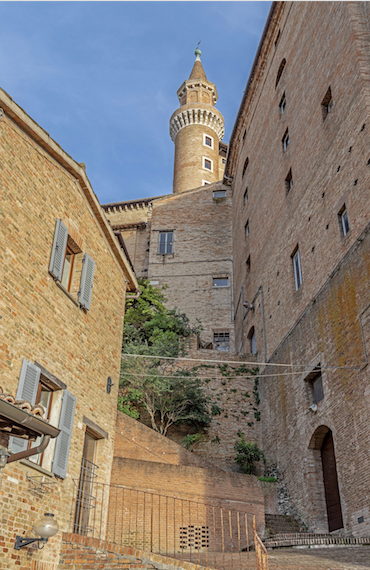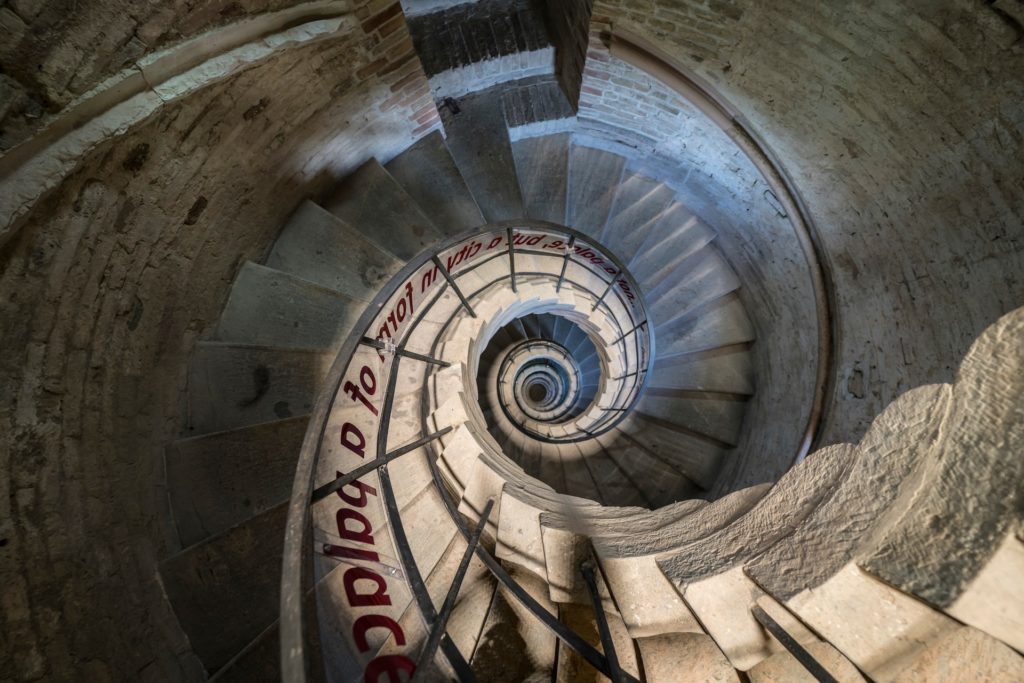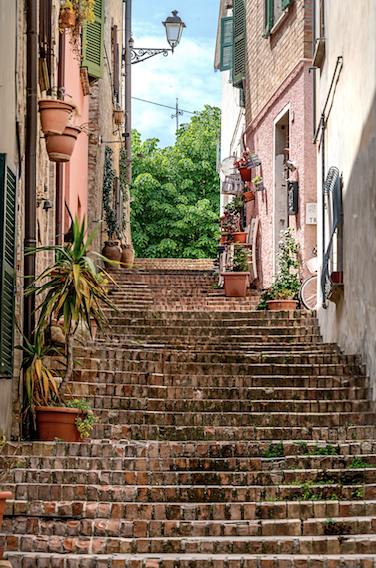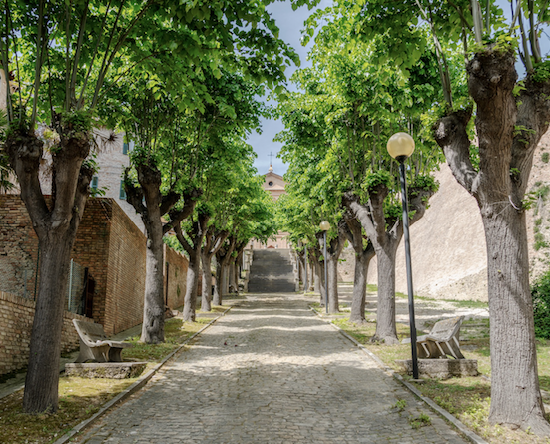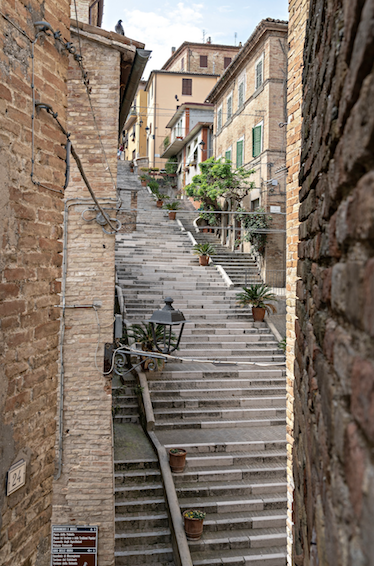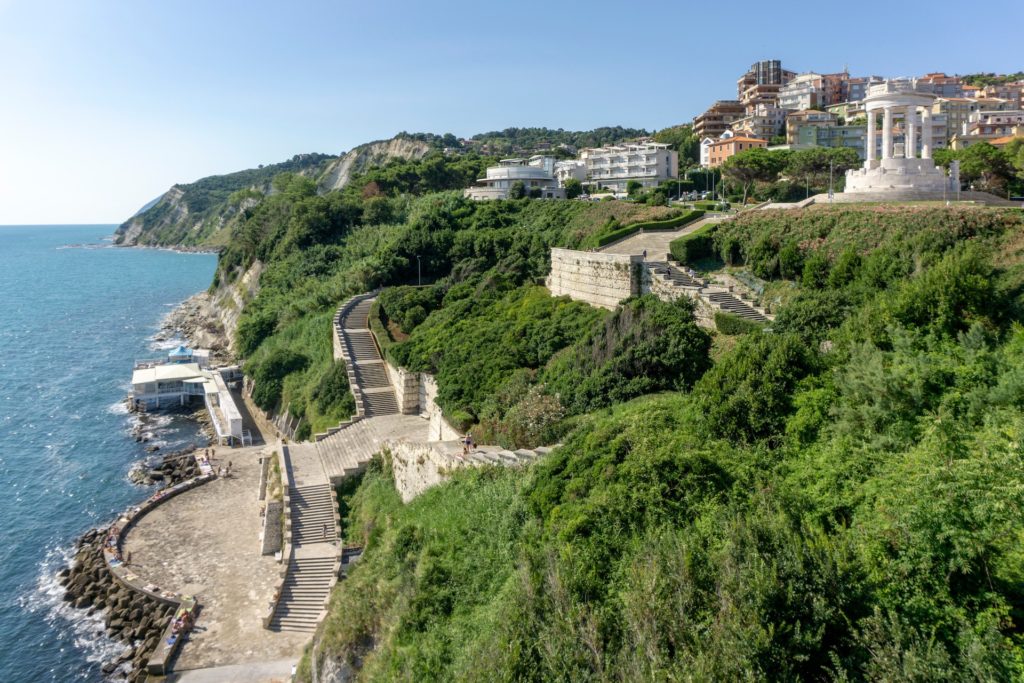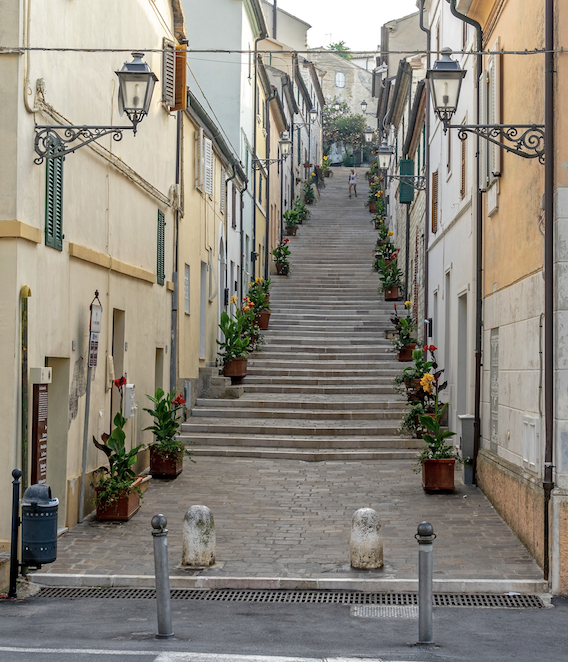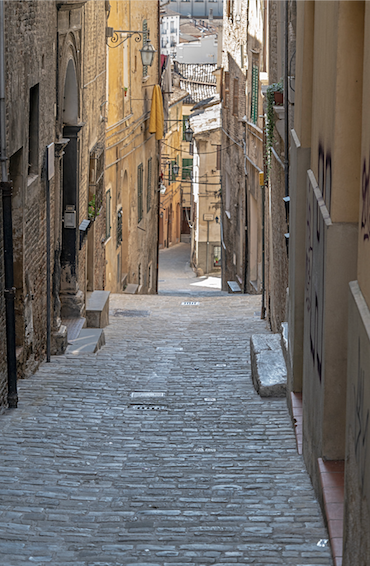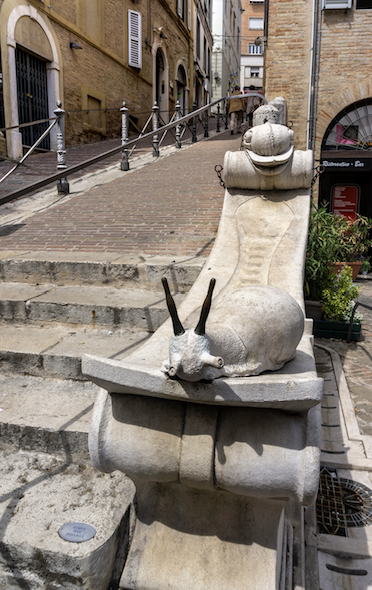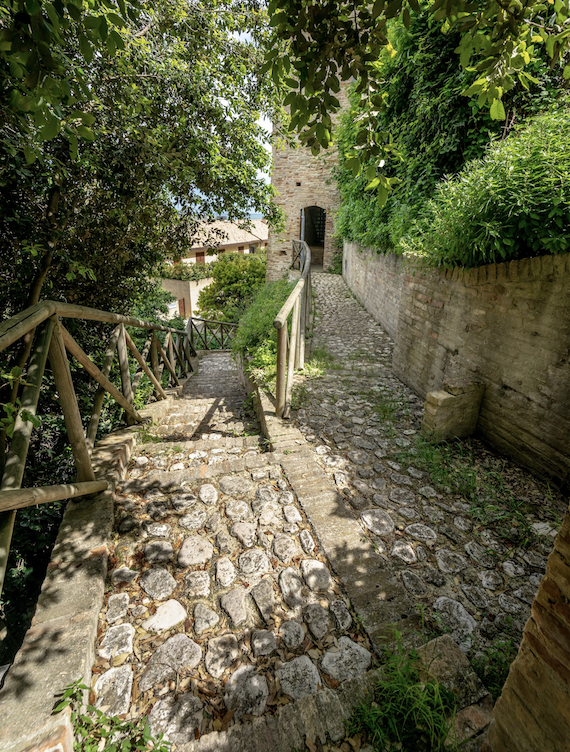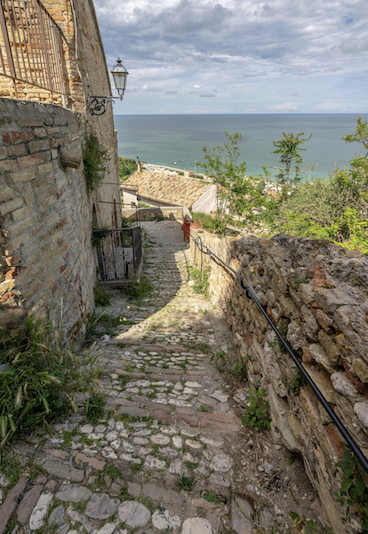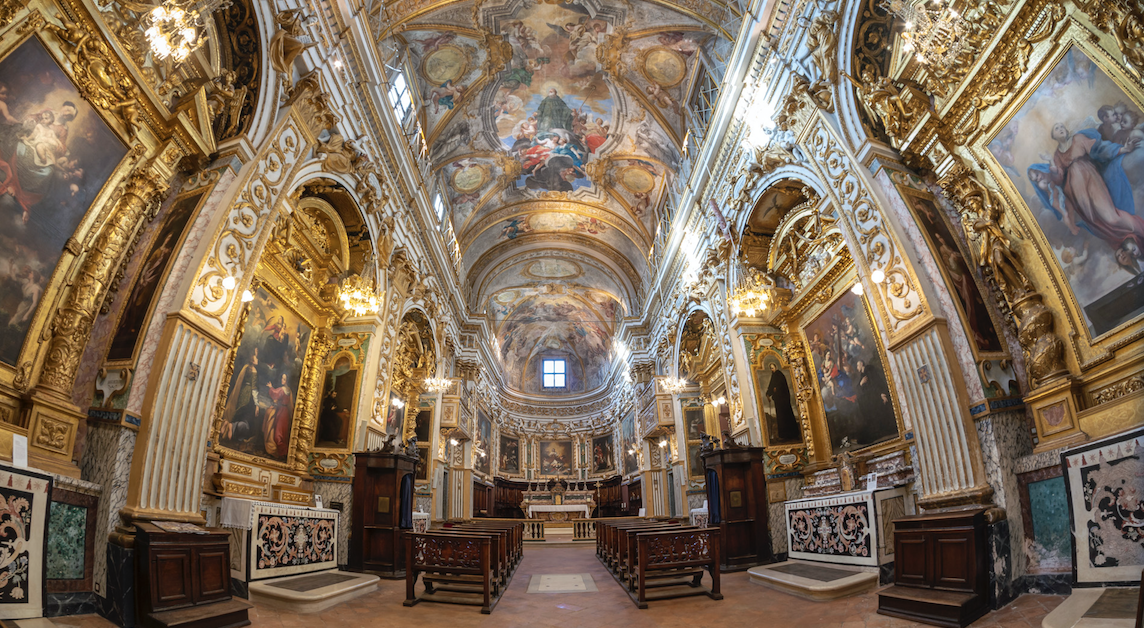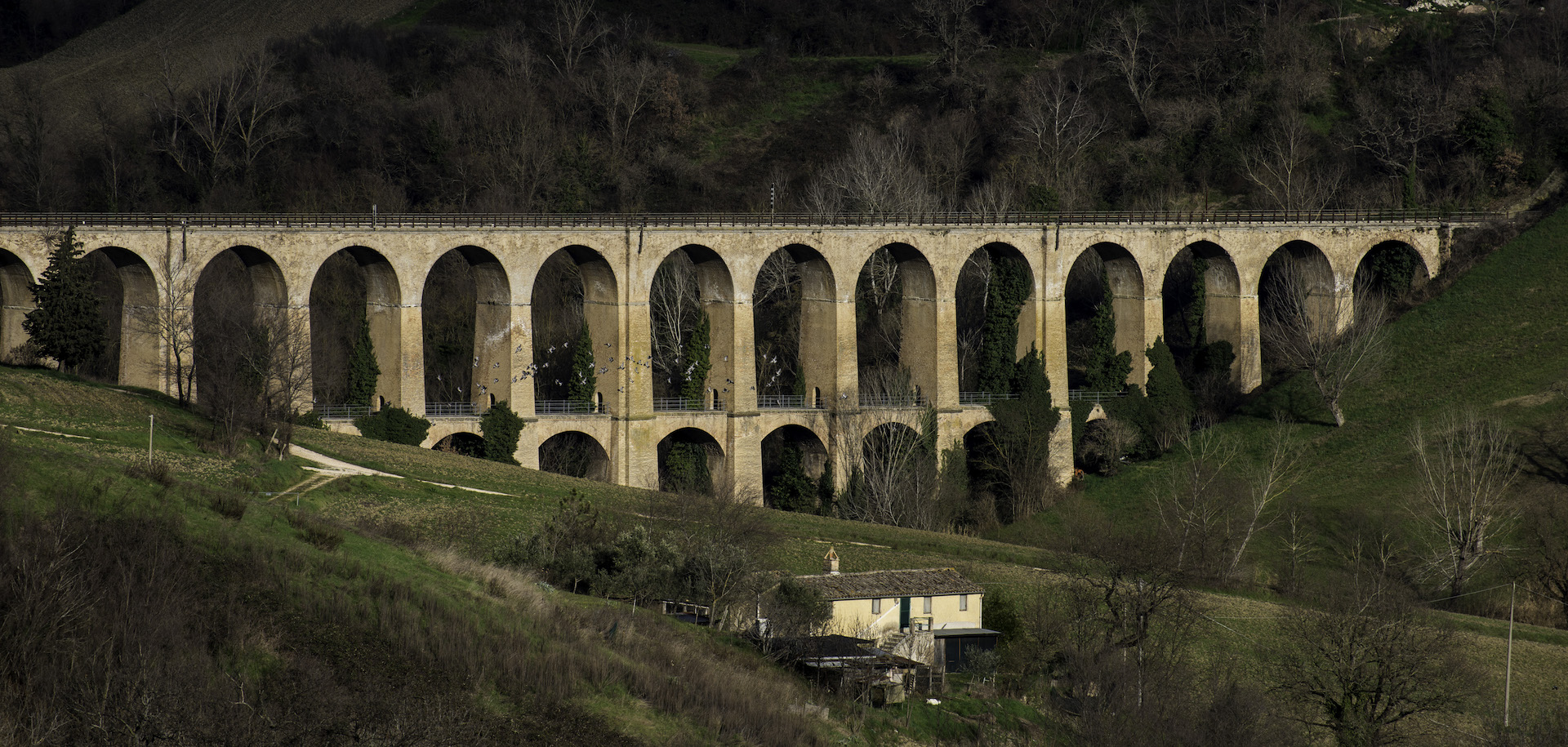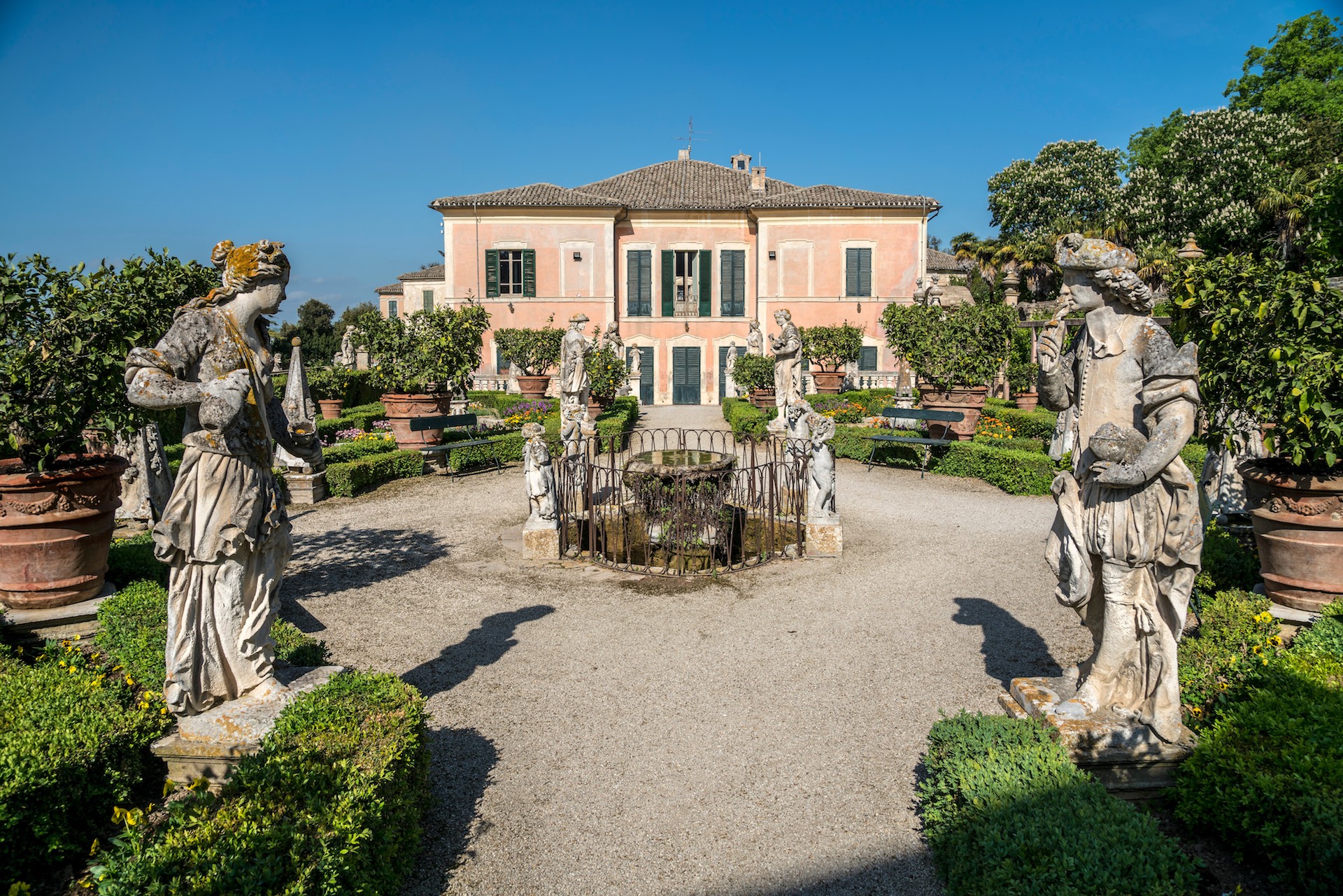Stairway after stairway
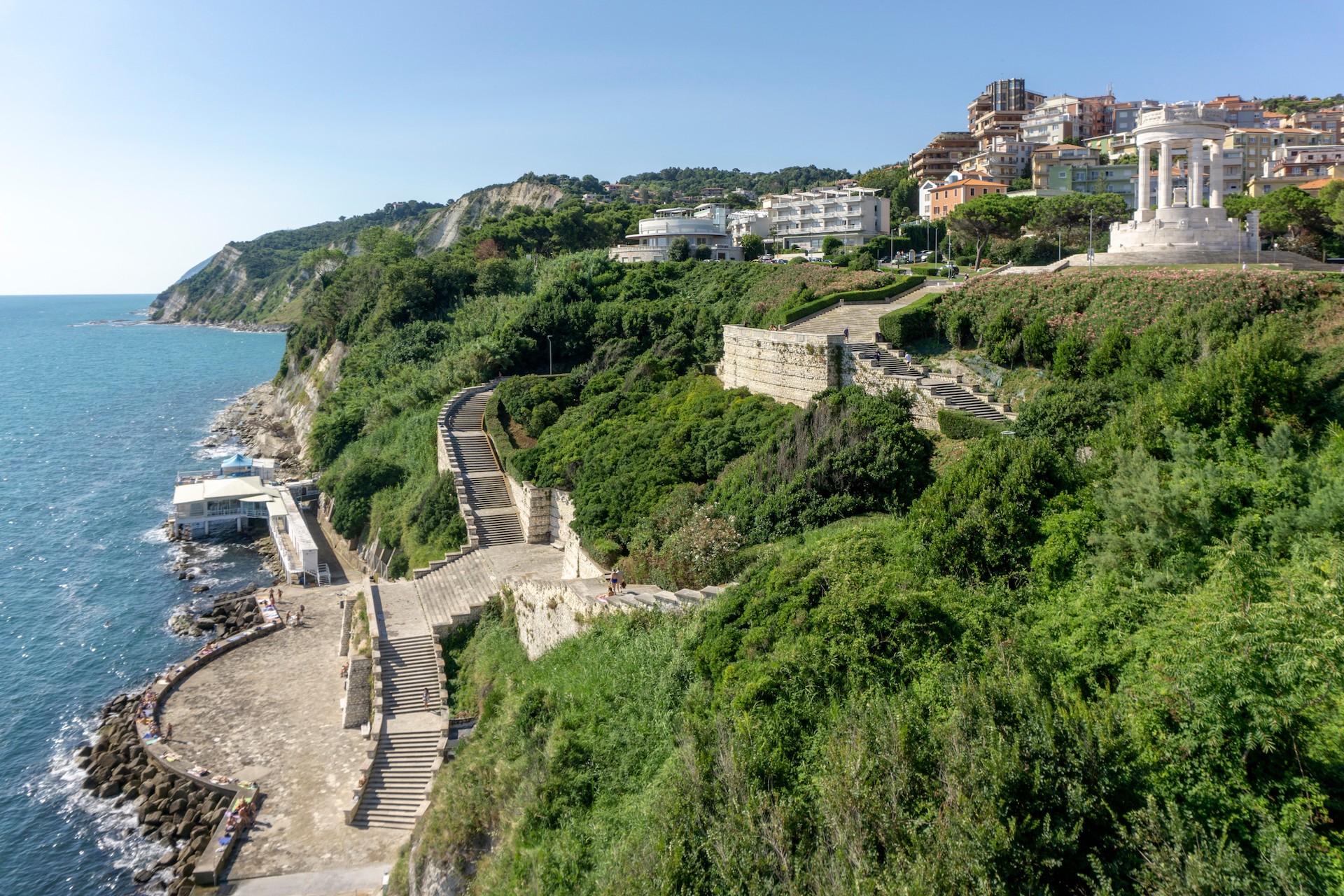
Stairways have always been a philosophical symbol of raising high. They create suggestions and paths which can only be perceived while climbing them up. Whether narrow and arduous or comfortable and relaxing, some are real artistic and architectonic masterpieces, so very beautiful as to make us forget even the effort it takes to reach on top of them. All belonging to the historical design of cities, they are generally built where the territory is naturally steep: whether ancient walkways connecting the city centre and the sea cost or stairways penetrating into the courts of palaces, or serving as access to city centres and citadels, they create breathtaking scenarios and are very appreciated both as natural stages for events and as simple meeting points. Lovers of photography are very fond of them too.
We will now suggest to you some of the most charming and suggestive stairways in Marche, which give value to the environment around them and make it more lively.
Historical stairways in Urbino
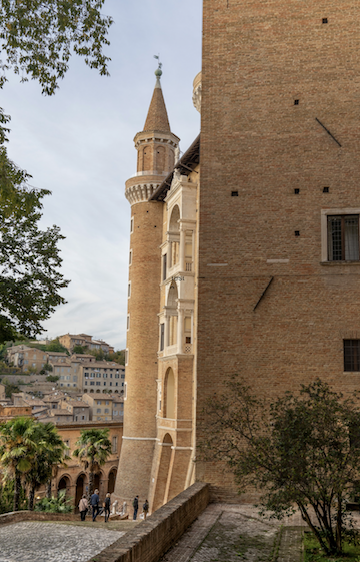
Urbino, a beautiful Renaissance city, an UNESCO World Heritage Site and an immense historic and artistic treasure, is characterized by a thick urban weave of narrow roads, typical alleys, tunnels, buildings and churches; and, of course, of historical stairways too. The helicoidal flight, designed by an architect from Siena as an access to the ducal stables, is certainly the most peculiar one. The building suffered a severe decline in the 19th century, and its tower was completely neglected until a careful restoration was performed in 1975-77. Another majestic stairway is certainly the one leading to the Cathedral. After the 1789 earthquake it was completely rebuilt in a neoclassical style by Giuseppe Valadier. It is often a meeting and resting point to many students from the local university and to visiting tourists.
Suggestive stairways in Cartoceto
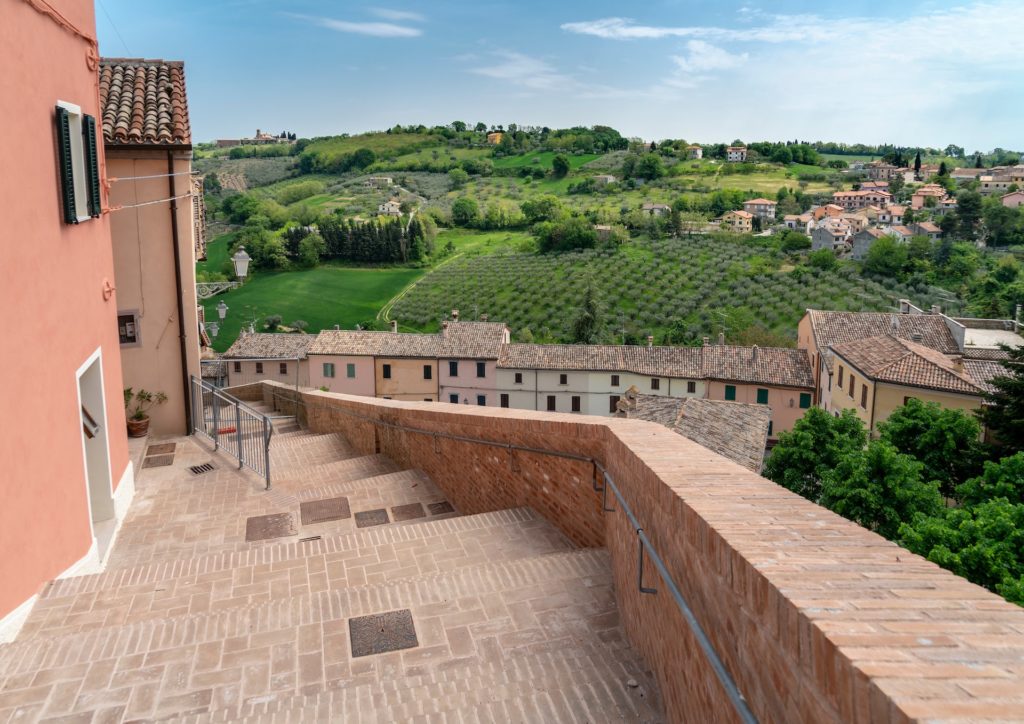
A lovely town in the province of Pesaro, Cartoceto lies on a soft hilly upland. Its very ancient origins are attested by the remainders of the castle in the Marcolini neighbourhood, which is where the stairway of Mazzini street begins. It connects the low and the high parts of the town and is crossed by alleys and narrow streets which characterize it. A strong scenic impact, while climbing up to the high side of the town, is also created by the stairway leading from Roma street up to the Collegiate of St. Mary of Mercy, dating back to 1835. Cartoceto boasts beautiful landscapes, which can be discovered while exploring the ancient castle alleys, and much more. It offers an atmosphere of gone by times which is really worth experiencing.
Corinaldo, 100 steps
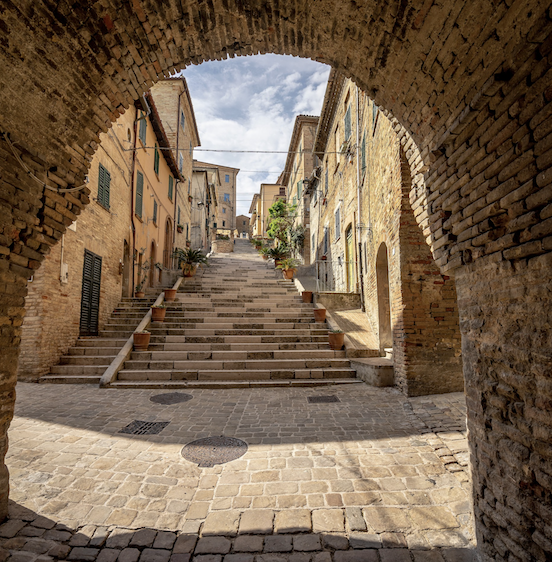
Due to rumours about some eccentric citizens of its, Corinaldo is known as the hometown of the fools and, because of their dietary habits, also as a place of polenta eaters. It is surrounded by beautiful city walls built in the 14th century, very admired and visited, but its main attraction is the 100 steps stairway, also called “stairway of the Piaggia” (a “piaggia”, in Marche, is a steep rise), which is the cornerstone of Corinaldo’s traditions. A pit, midway along it, is the location where they re-enact the “Dispute of the Polenta Pit”. One of Corinaldo “fools” worth mentioning is “Scuretto” who spent to buy and drink wine all of the money his son sent him from America to build a house, of which the façade only rose: it is still there, along the stairway, and is one of the town’s emblems. Further to the fields and the magnificent vineyards, many monuments and churches make up the background of the stairway. One of the latter is Our Lady of Sorrows’, with a crypt dedicated to St. Maria Goretti, who was born here.
Ancona, a majestic stairway by the Monument to the Fallen
Ancona, capital city of the region, boasts many places worth visiting, one of which is certainly the Monument dedicated to the Fallen in World War I, in the Passetto neighborhood. On its top are engraved some verses from Giacomo Leopardi’s ode “To Italy”: Most blessed are you who offered your chest to the enemy spears out of love for her [the homeland] who gave you your life.
The monument, inaugurated by Mussolini in 1932, was built with white Istria Stone and is surrounded by a pine grove, a very visited summer meeting point and certainly one of the most suggestive of the Doric city. From the monument, a majestic and elegant marble stairway leads down to the sea and the fishermen’s caves. From this viewpoint, the whole structure reminds a flying eagle, whose open wings are represented by the flights of stairs and the crowned head by the monument.
“Costarella” stairway in Numana
The city centre of Numana, a very appreciated seaside resort lying by the slopes of Mount Conero, offers many characteristic views. A remarkable one is the historic stairway called “Via della Marina” (Marina road), better known as “Costarella”. Author Cesare Romiti remarks that “… That most steep road, that absurd path … has in some points an up to 24% or 25% slope”. It is indeed a very narrow and steep path, where in ancient times lived fishermen only, who along it came from the high quarters of the town down to the port. “Costarella” is flanked by pretty stone or coloured cottages and is currently used by residents and tourists to get down to the seashore or even just to enjoy magnificent postcard-like views. In the summertime it also becomes the natural stage of the “Under the stars” art exhibition, a rendezvous for contemporary painters from Marche which is performed since many years.
Jesi, little staircases and stairways
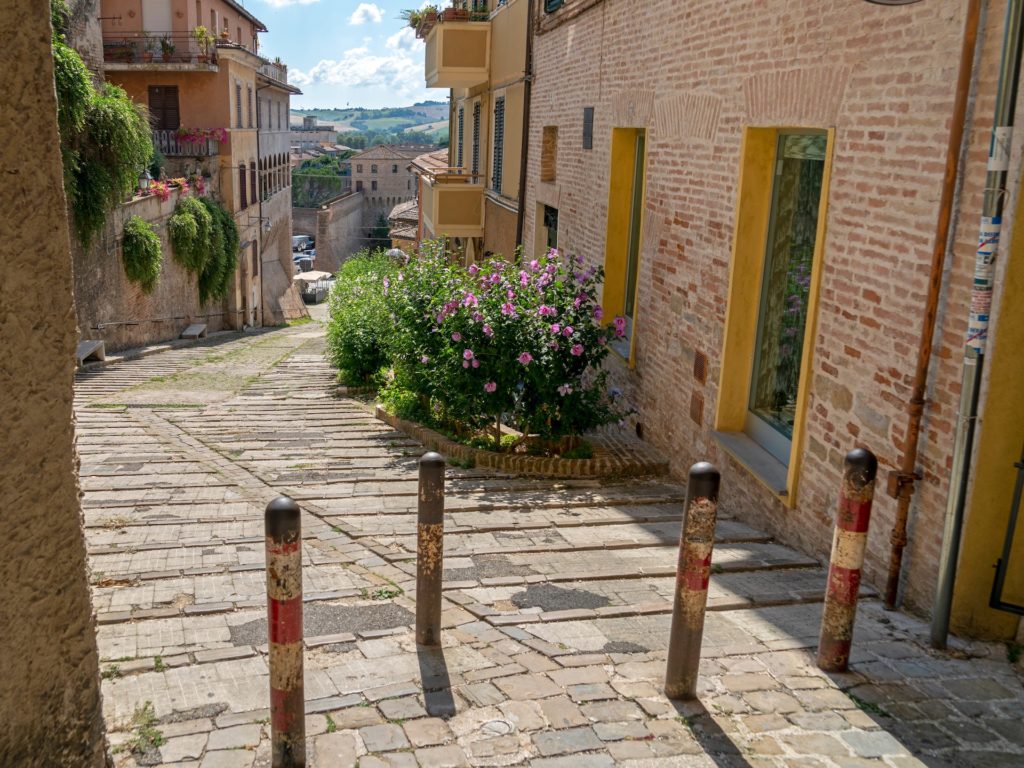
Jesi, little more than 20 Km away from the Adriatic sea, is the most important city in the Vallesina valley. Touring it means exploring a place rich with art and history, monuments, museums and libraries, all enclosed in the strong city walls along with elegant noble palaces, in a thick net of alleys, little squares and stairways. As for the latter, remarkable is the most peculiar “Staiway to death”. Its name, which some blame on its hard steepness, according to tradition it is due to the presence, on top of it, of the Church of Adoration, also called Death Church because in charge of it was the Brotherhood of the Poor and of Death, whose institutional tasks were the assistance to detainees and the burial of the dead. By the bottom of these stairs rises architect Baccio Pontelli’s Midday Tower, built in the beginning of the 15th century under pope Nicolas V, so called because it points south. Another interesting itinerary leads from Porta Valle (Valley Gate) to Frederick II square. Indeed, after entering the long and well kept city walls and climbing up a stairway that crosses the historic centre, one ends up on the prestigious square, surrounded by several buildings which include the Cathedral, dedicated to St. Settimio, and Balleani Palace, inside which has been set up the IME (Enogastronomic Institute of Marche) Experience, a project consecrated to knowledge, diffusion and taste of high quality enogastronomic products of Marche.
Macerata and its “Scalette”, a meeting point
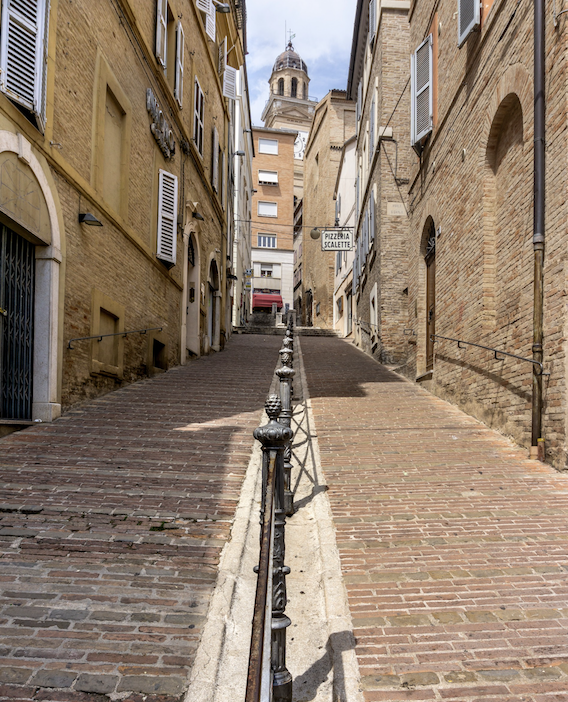
The municipality of Macerata, a city resting on top of a hill 311 metres above sea level, was born in 1138. The design of its historic centre dates back to the 17th century. In particular, “le Scalette” (“Little steps”) stairway was built to connect Freedom Square, the city administrative centre, and Mazzini Square, formerly Market Square, at that time its commercial heart. Originally, the stairway was nothing but an arduous path lined by scrub. In the end of the 15th century it was given the aspect visitors can see nowadays. In 1466 it was paved with cotto bricks and in time underwent many structural modifications, caused also by the need to adapt it to the architectural and climatic characteristics of the place. “Scalette” are nowadays frequented by students from the local University and tourists visiting the city, all making them a meeting point or a path to get to the square, where stands the civic tower which hosts the famous planetary clock whose large blue quadrant and concentric circles show, further to the hour, the lunar phases and the movement of planets: a unique specimen on a Renaissance tower.
Petritoli, nothing but suggestive stairways
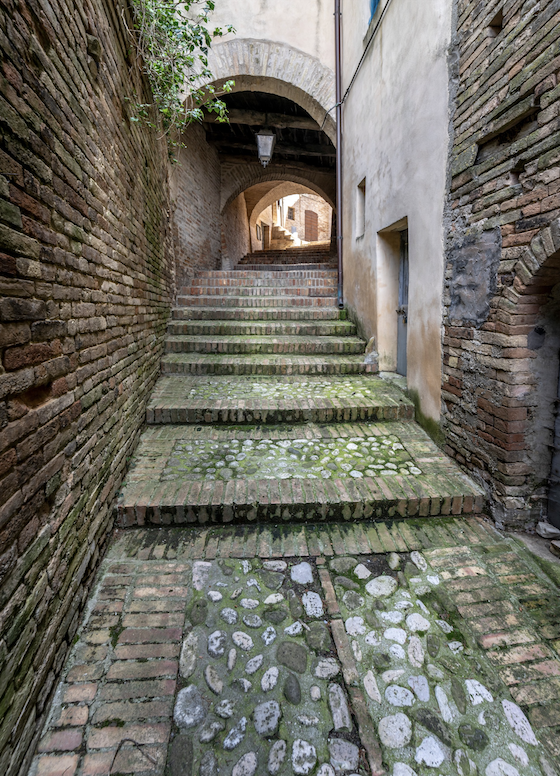
Petritoli is a municipality, in the province of Fermo, which dominates the Aso valley and offers a panorama ranging from the Sibillini mountains down to the Adriatic sea. In Petritoli too there are majestic stairways, the most remarkable being the one leading to the lavish monumental gate consisting of three Gothic arches flanked by two 14th century towers. A view loved by many newlyweds, especially strangers, who choose this town to celebrate their wedding. Another remarkable stairway leads from the nearby Mazzini square to Borgo Vecchio (the Old Borough), the upper side of Petritoli, where once rose the citadel; as the military importance of the place lessened, the transformation into a town took place around Lucentini square and piazza della Rocca (Citadel square), wherefrom one can get up to the spectacular Civic Tower.
Grottammare, plenty of entry staircases
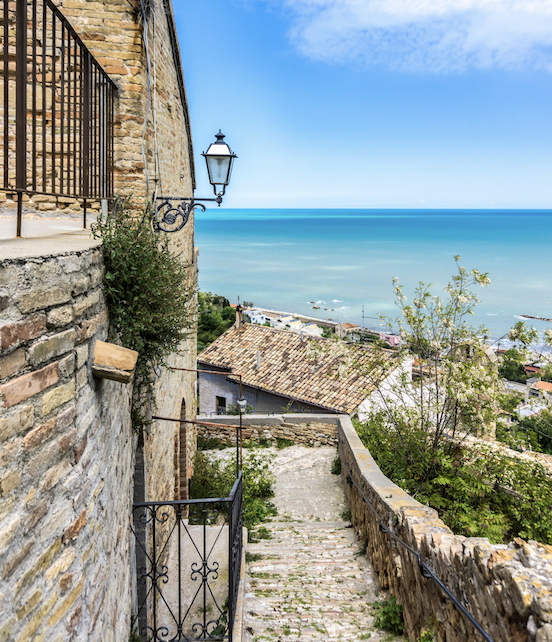
The medieval borough of Grottammare Alta (Upper Grottammare) rises on a cliff hanging on the sea, wherefrom it looms above the modern city. It was built there for military reasons and its imposing, still visible Castle, was used as a watchtower. Grottammare fascinates visitors with the splendid view on the Adriatic Riviera it offers, with its luxuriant vegetation, especially the orange trees, and with the charming glimpses of its ancient borough. The sequel of narrow roads, alleys, tunnels and stairways and the surrounding landscape make up a beautiful scene. Stairways are many, mostly at the gates of the borough, each bearing a peculiar characteristic. Most remarkable is the steep one leading from the right side of St. Lucy’s up to Porta Castello (Castle Gate), one of the entrances to the borough, then to a suggestive place which dominates the whole fortification, and even higher, to a place where breathtaking panoramas can be admired from, down to the beaches and to the underlying sea.

